There’s a hydrologic shift happening in the world’s watersheds, one that is profoundly impacting the way rivers flow and how fish exist within increasingly variable and unpredictable environments.
“It’s not just that the water is warming,” Clint Muhlfeld, a research aquatic ecologist for the US Geological Survey, said. “It’s actually a shift in the hydrologic regime which is producing lower base flows in the summer. We’re also seeing an increase in the frequency and intensity of fall and winter flooding, on top of disturbance events like more wildfires across the West and more pronounced, extended and severe droughts.”
Muhlfeld has spent his career studying the impacts of climate change on trout species in the United States. Through his research, he’s been able to quantify climate change impacts across a variety of watersheds, primarily in the Rocky Mountains. His findings demonstrate that we are seeing systemic, long-term changes to rivers—a reality that is already abundantly clear to many anglers.
Within a year of opening their fly shop, Driftless Angler in Viroqua, WI, owners Mat Wagner and Geri Meyer witnessed the effects of a 500-year flood on their namesake watershed. Two years later, it was a 1000-year flood. Two years after that, yet another 1000-year flood. They watched as the places they love were fundamentally changed in recurring and historic flood events—from river flows to bug patterns to fish die offs.
As anglers, many of us are grappling with how our behaviors and the business practices of the companies that fuel our passions impact the rivers we call home. For shop owners like Wagner and Meyer, the prospect of losing the places they love and rely on for their business to anthropogenic climate change was a huge motivator.
“We [realized that we] have to put our money where our mouths are because this is clearly impacting our fishery, you know?’” Meyer said. “Weather patterns are changing drastically, we’re seeing it every year, so we thought the best thing we could do is to make some changes internally.” The first step, Meyer and Wagner decided, was reducing their own footprint by cutting emissions and supporting companies engaged in the same effort.

The question remains, however, whether the industry as a whole can be similarly motivated to pursue a larger goal—especially as it becomes more and more clear that the time to change course is now (or maybe yesterday). That larger goal, one that has only recently started to gain traction, is industry-wide carbon neutrality. But what does that look like and how does it get done?
Rick Crawford has a few ideas. In 2016, Crawford started Emerger Strategies to push fly fishing to carbon neutrality. Emerger is now the foremost organization advocating for carbon neutrality in fly fishing, and possibly within the outdoor industry as a whole. Crawford helped Driftless Angler reach carbon neutrality—becoming one of the first fly shops to do so—alongside Emerald Waters Anglers in Seattle, WA.
“What if we could align an entire industry working toward a common goal? Wouldn’t that be far more productive—and could actually move the needle on climate change—versus just picking up individual brands and shops?” Crawford asked.
Crawford speaks with a blend of realism and measured hopefulness that is refreshing and rare—a moment-by-moment reckoning of what should be done and what actually can be done. His goal is a big one—industry-wide carbon neutrality by 2030—and even he admits that achieving it will be an undeniably huge undertaking: reducing emissions from the top down, from the factory to the warehouse to the shelves of the fly shop to the drift boat. The question is, how?

Crawford notes that we need to reduce our emissions by 45 percent this decade, to below 2010 levels, and reach complete net-zero emissions by 2050 to avoid the most catastrophic effects of climate change. But make no mistake—many grievous effects and system-wide shifts are already here.
Crawford’s three-tier model encompasses the entirety of a business’ emission profile. Tier one emissions are those that a fly shop or brand are directly responsible for—fuel for guide vehicles or heating a commercial space. Tier two is purchased electricity for a commercial space—traditionally offset by solar panels. Tier three is upstream emissions, like the carbon emitted during the manufacturing and transportation of products, which come from all over the world. This includes the big, global manufacturers that supply much of what can be found on the shelves at your local fly shop. This is where most of the industry’s emissions originate. “Scope three is really complicated, it’s your upstream supply chain and frankly it’s a pain in the ass,” Crawford said. “And that’s what scares a lot of people.”
Two shops that have achieved carbon neutrality—The Driftless Angler and Emerald Water Anglers—did so through a few simple steps, mostly by choosing efficient commercial spaces, being more conscious of travel and fuel costs, installing solar panels and offsetting the carbon emissions they couldn’t otherwise cut on their own.
Dave McCoy, owner of Emerald Water Anglers, is a big personality that brings a relentless optimism to the act of making his shop and community more carbon neutral. But even McCoy imagined carbon neutrality to be a nearly insurmountable obstacle until he started the process and realized just how accessible these initiatives were.
“It was about as easy as possible and that was mostly because I had two experts hold my hand through it,” McCoy said, referring to Crawford and scientist Mike Taptich, who is a regular customer at Emerald Water. “I think that’s probably why most other people haven’t done it—it does seem like it’s an incredibly arduous endeavor and most of us just don’t have the time to investigate it, but it’s really not.”

McCoy consulted with Crawford and Taptich, who is Emerger Strategies’ staff scientist, on ways to reduce emissions and Emerger helped find appropriate offsets for what EWA couldn’t logistically cut. McCoy ended up spending around $1,700 to offset around 118 tons of carbon emissions; one offset was for a public greenspace in King County, where the shop is located, while the other was to help protect an island in Alaska from deforestation.
Wagner and Meyer recently had solar panels installed on their shop, which is a considerable financial investment for a small fly shop in the rural Midwest. Meyer is adamant that the costs were worth it, and that it felt like the least they could do for the resources they rely on for their business; she’s also quite frank about the self-serving reasons driving parts of the neutrality conversation.
“It’s not that it’s selfless. It’s not that it’s completely altruistic. We have a business that is completely reliant on a healthy resource,” she said. “But I have no qualms with saying this is your playground, you know? If you want to continue to play in this playground, you’ve got to do something, you’ve got to step up and do something to protect it.”

What Meyer is speaking to is an essential understanding in the conversation about neutrality—namely, that it doesn’t have to be an either/or argument between profit and sustainability. Any efforts are better than none and more companies are coming to the understanding that they can satisfy their bottom line while prioritizing the climate through the ways they operate, the values they hold, and especially by how they influence other anglers, business owners and clients.
It can be useful to think of carbon emissions like we might think of a watershed: whatever emissions happen in the highest reaches of the system eventually trickle to every brand, shop and guide downstream, and the proverbial headwaters—namely product manufacturing—are where the vast majority of the carbon emissions occur in the fly fishing industry. Shops and smaller brands that attempt to neutralize their carbon output often must pay for the carbon emissions “upstream” of their operations, which can include all of the carbon necessary to manufacture and deliver every product they sell on their shelves.
If every brand, manufacturer, shop, guide and even customer tracked, reduced and offset their own emissions within the industry, there would be no need to pay for the emissions of those higher or lower than you on the supply chain.
Taking responsibility for our footprint starts a conversation—I talk to so many clients on the boat about it, and also I’m finding that people are seeking me out to come fish because I’m working to protect our fisheries and have gone carbon neutral.
“If you were able to map out the fly fishing industry and some of its [shops, guides and brands], you could build a sort of ecosystem where if every business was responsible for its own emissions, there would be no need to [calculate the emissions of large suppliers and manufacturers],” Rick said. “So that’s like the ‘Aim for the stars to land on the moon’ goal.”
The challenge then, is getting the neutrality conversation—oft-discussed in drift boats or over beers—into the upper echelons of the supply chain. Translating those conversations into legitimate change at the top will require concerted pressure from the fly fishing industry as a whole, in addition to a widespread cultural shift unlike anything that the outdoor industry has seen. According to Crawford, the secret is simple: treat neutrality as an essential step and a potential business advantage, not as the complicated and expensive process it is perceived to be.
“Taking responsibility for our footprint starts a conversation—I talk to so many clients on the boat about it, and also I’m finding that people are seeking me out to come fish because I’m working to protect our fisheries and have gone carbon neutral,” says Kyle Schaefer of Soul Fly Outfitters, who was the first fly fishing guide to achieve neutrality. “I’ve found from a marketing standpoint that it’s attracted a lot of people that I enjoy having on my boat. It brings in wonderful people who are in the fight as well and cultivates the community in that sense.”

Schaefer added that he’s starting to work more locally—fish closer to home and attract more local clients—to reduce fuel, which is one of his biggest sources of emissions as a guide.
Some brands have taken a similar route with their manufacturing, opting for suppliers that are local or closer to home, or otherwise replacing certain products and materials with more sustainable alternatives. Rep Your Water, an apparel and accessories brand out of Colorado, achieved neutrality by seeking out recycled products (35% of their apparel line is made of recycled materials), purchasing offsets and ensuring that more than 90% of their waste doesn’t end up in a landfill. Corinne Doctor—who owns Rep Your Water with her husband Garrison—said the process was not without its uncertainty and that she was very skeptical at the beginning.
“We first met [Crawford] at the International Fly Tackle Dealers show in 2017 and he just walked up to our booth and he was like, ‘What are you doing to be more sustainable?’ I told him about how we donate three percent to conservation. He was like, ‘Great. That’s totally awesome. What about everything else?’ We just started the conversation with him and we were intrigued by the idea and we just did everything by learning along the way.”
Perhaps the simplest way to incorporate neutrality into a business or brand is to simply start as carbon neutral, or close to it. This is the path that Bajío Sunglasses owner Al Perkinson is taking with his business, which is barely a year old and was entirely carbon neutral from inception. His biggest steps towards achieving that were using recycled shipping materials and finding factories that are either close to home (to cut shipping emissions) or are committed to being certifiably sustainable. He’s also purchased a few carbon offsets from Emerger—primarily to plant mangroves in Myanmar. “This is real time, real life stuff, and we feel better about that,” he said about the opportunity to directly support such initiatives.

“It’s hard for a startup to have leverage to get [suppliers] to change their practices, but we’re having the conversations and they know it’s a priority for us,” Perkinson said. Bajío's frames are primarily made in Italy at a factory that is all electric and they’ve recently moved their case manufacturing Mexico to cut shipping emissions from Asia. Another important step for them was no longer manufacturing their cases from cow leather but from vegan leather made from cactuses—which are dried in the sun and require very little water to grow.
“Everyone is in motion and ultimately we’ll all land at a place that will get us carbon neutral and producing in a sustainable way.”
Brands like Bajío and Seigler Reels are members of the Fly Fishing Climate Alliance and have received consultation from Crawford. A number of guides across the country have also committed to carbon neutrality, with Soul Fly Outfitters guide Kyle Schaefer being the first to achieve it.
“That’s where it started for me was seeing things changing so rapidly on our home waters.”
Travel is considered a necessary evil in the fly fishing industry and is undoubtedly difficult to cut out completely in the modern fly fishing world. It’s hard to look at a company that sells destination fly fishing trips and ask them what they’re doing to offset those emissions. But Jim Klug, founder of Yellow Dog Flyfishing out of Bozeman, Montana, was open to the discussion and even happy to talk about the challenges and triumphs of his company and associated non-profit, the Yellow Dog Community and Conservation Foundation.
“Going carbon neutral gets a lot of talk and it’s obviously a goal that every company would like to strive for,” he said. “But the reality when it comes to what we do, which is send people all over the world in pursuit of fish, is that it gets tricky.
“You can’t ignore the fact that if you’re getting on a plane and flying to Argentina to fish, or you’re flying to Alaska or the Seychelles—the point is you’re still flying.”
Klug was upfront about the challenges that come with making a travel company carbon neutral, and about his hesitancy with the legitimacy of carbon offsets. It’s clear that he supports sustainability initiatives and that the Yellow Dog Community and Conservation Foundation does important work in the communities that host anglers traveling with Yellow Dog. He’s impressed by companies that have been able to become carbon neutral—all companies that are inherently less carbon-intensive than a travel company. But his skepticism with carbon offsets is one that’s shared by many in the industry and beyond, and one that’s worth considering in any future conversations we have about neutrality—how can we assure that offsets are authentic and, moreso, actually helpful?
Offsets are a complex and nuanced element of carbon neutrality—many companies offering them haven’t been vetted for their authenticity or actual benefit, and some are outright scams. In the case of Rick Crawford’s Emerger Strategies, all offsets are vetted through independent organizations with staff scientists and data to back up their efficacy.
“There is absolutely no substitute for reducing your emissions, but carbon offsets are a pathway to achieve carbon neutrality, and it’s important to know what makes a good carbon offset versus a bad one,” Crawford said, noting that the offsets he offers to clients incorporate four crucial characteristics: immediate, verified, additional and permanent. “The best offset is no offset, you want to reduce emissions, but the other part of this is that we want to do something, right?”
An industry-wide cultural shift will be the change that drives carbon neutrality in fly fishing and in every other industry. But this will rely not on hope or perceived benefits alone—it will require us to do the thing that needs to be done regardless of how much or little impact it has in our lifetimes, knowing that it is the right thing to do at its core. In this way, it’s easy to espouse the benefits of carbon neutrality to like-minded folks who might be turned off by the assumed expense or time commitment—it’s something different altogether to battle apathy or an outright rejection of the values inherent in seeking carbon neutrality.
We need to make it weird [to not be carbon neutral].
Consider the wild success of the anti-smoking campaign, which picked up steam in the 1980s and continues to this day, despite that just 4.6 percent of teenagers were daily smokers in 2020—down from 19 percent in 2001. In a single generation, this campaign made smoking uncool, with permanent and effective policy changes to back it up. A similar shift will need to occur in the outdoor industry, and in industry in general to combat the effects of climate change on fisheries, our lives and the planet.
“We’re going to have to force their hand,” Crawford said about getting indifferent individuals and businesses on board with carbon neutral initiatives. “We need to make it weird [to not be carbon neutral].”
McCoy had a similar sentiment, but spoke equally to the importance of welcoming people with different viewpoints and showing them how these initiatives will not only benefit the resources they rely on, but will bring them into a shifting culture that could benefit their business, too.
“It’s going to take time,” McCoy said, “and we have to be at the front end of that by opening our arms and making people who are naysayers curious enough to be able to have this conversation with someone who will be able to tell them how important it is to do this—not so much a beating our chest as much as trying to lay the groundwork for those who follow to realize how to get here.”
So what would a carbon-neutral fly fishing industry look like? Likely a combination of everything outlined above—a coordinated blend of reducing our own emissions from the top down and of choosing products from companies that have prioritized neutrality and sustainability while putting pressure on the companies that haven’t made that commitment yet. Additionally, utilizing our gear for longer and buying used gear are fantastic ways to reduce individual emissions. Regardless of what we choose, it will require a movement to make it happen, and there’s a chance we may not even see the benefits of this work in our lifetime. The question, then, is can we spur widespread change on the scale that we need and in a short timeline, without knowing for sure if we will even benefit from it?
That answer is probably the simplest of them all: because we know what we stand to lose, and in some cases, we already know what it is to have lost it.




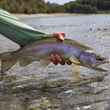
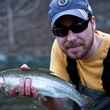
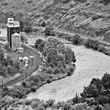
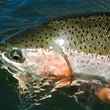
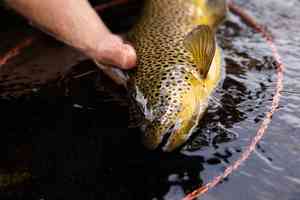

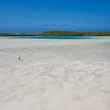
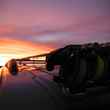
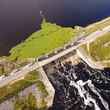

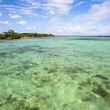




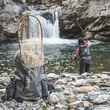




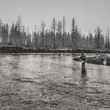
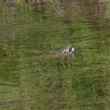
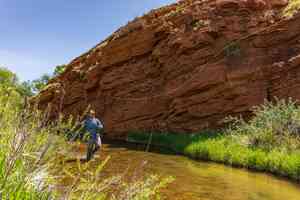
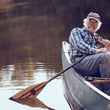

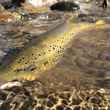
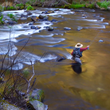
Comments
Glenn Dotter replied on Permalink
A good article. I have been off grid since 1996. The one thing that gets me is that buying carbon offsets seems to be the way most or alot of you go. Even our "Climate Czar" seems to think he can emit as much carbo as he wants because he can buy carbon offsets. What BS. Who came up with the idea that you can pollute as much as you want as long as you can buy offsets. What hippocrits. I say if you are not an example buy reducong your dependancy on the grid and fossil fuels, then buy all the credits you want and I wont believe you care. How many of you are Off Grid? Not grid tied. That is simple and a way to show you are serious. How many of you drive EV's. How many of you actively/ physically are involved planting trees and plants that process CO2 into the Oxygen we breathe. In the past few years we have seen millions of acres of trees and plant burned, yet I dont see tree planting on a large scale. "Environmentalists" fight responsible forestry efforts and thinning of dead trees that could supply lumber or firewood to people that cant afford $250-500 a cord. Our forests are our life blood yet we do little to replace what we burn. Logging/forestry product companies replace what they take.
The article shows some good efforts, but when it comes to the businesses actually biting the bullet it is easier to pay someone else to offset your carbon footprint.
Dave Hayes replied on Permalink
I'm happy to see The Driftless Angler get attention for its efforts (as the others featured). Mat and Geri are solid people and host a wonderful shop that might be the best in the Midwest. They remind one of Craig and Jackie Mathews of BRFs, always exploring and sharing for their customers about how to work a positive impact. With so many options available to gear up, we can all vote with our dollars - who you support matters. We can only fish if we have a healthy resource, and at my advancing age, I'm watching it compromised in a number of ways. I hope more stand up and help us all change direction. Thanks.
Robert Twombly replied on Permalink
One thing that gets little mention is the fossil fuel transportation we anglers use to get to our fishing spots. Speaking about America primarily...you see a whole lot of F150s, Silverado's, Rams and Tundra's all over the parking lots at various fishing spots. Most of the anglers have no real need to drive a vehicle that barely gets 20MPG on average. The continued trend toward large SUVs and Pickups is not an environmentally responsible choice in most cases. Towing a drift boat can easily be done with a small SUV or sedan they don't weigh much at all. Smaller SUVs and cars are adequate for most of us yet we Americans seem to always feel the need to go big. My two cents, very few will likely agree but its a move we could make as a group to help.
Michael Schweit replied on Permalink
I like that many guides and outfitters are now having water in insulated jugs and giving their clients cups instead of plastic water bottles. Western River Fly Shop in Dutch John and Osprey Tours in Xcalak are just two examples. But how about recycling flylines? Not reusing into another product but actual recycling of the cores and coverings? Or at least using materials that lend themselves to that. So many things we can strive for.
Joel S replied on Permalink
So when I buy a product from any of these shops on their website, I guess it gets delivered via magic, fueled by non-methane unicorn farts? Good effort, and every effort "helps" but a lot of it is obvious virtue signaling. I got a pocket full of "carbon offsets" for sale if anyone is interested.... How many of us are going to go back to greenheart rods and silk lines.... after getting dropped off at the artificially stocked creek to fish for an hour while your wife drives her 3/4 ton pickup to the grocery store?
Pages